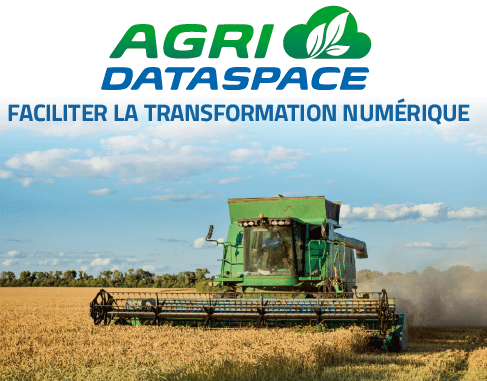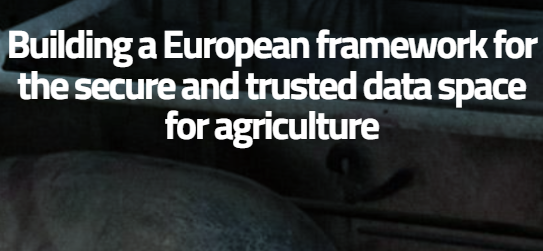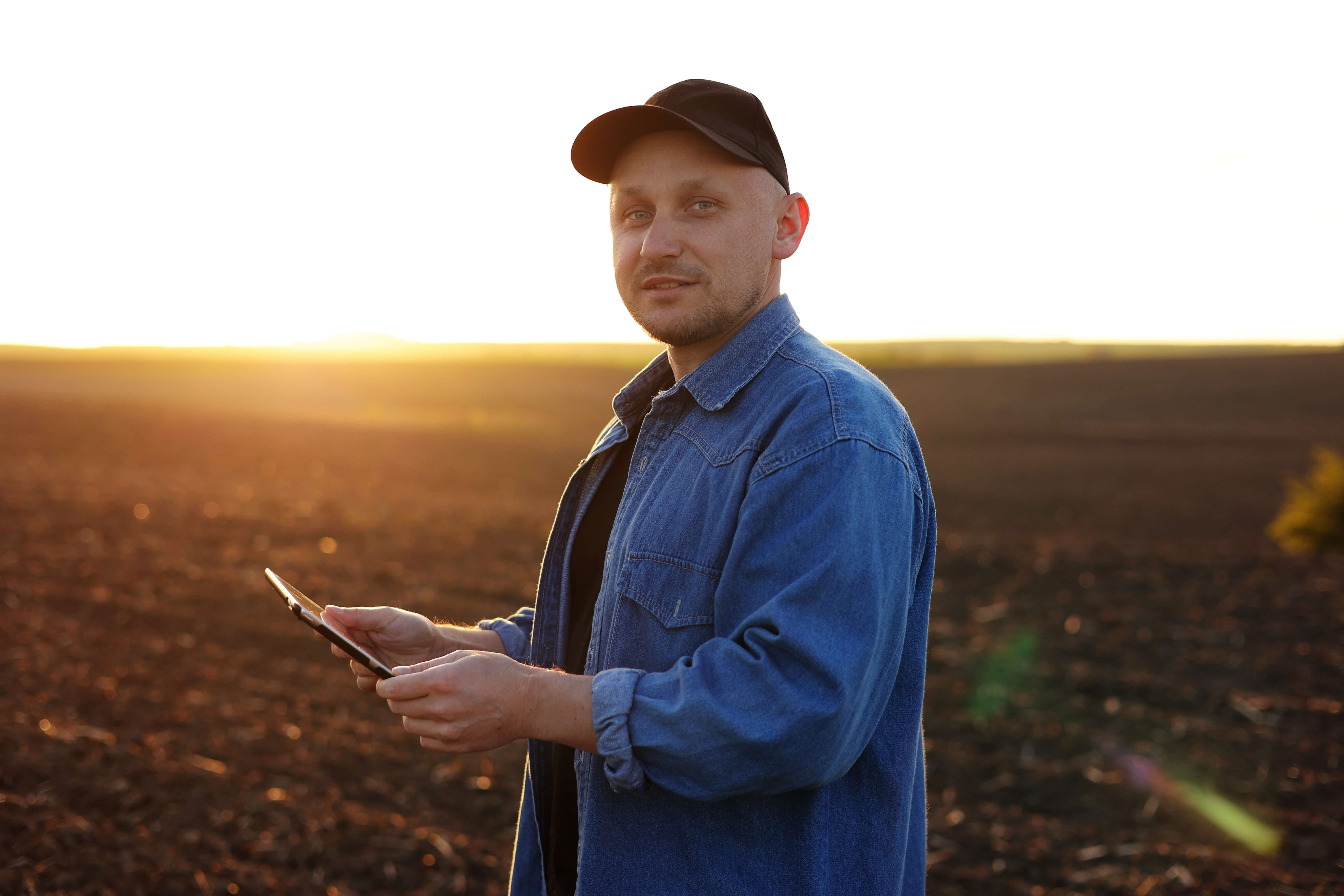Agridataspace: the roadmap for the future data space dedicated to agriculture has just been delivered
Update 05/09/2024: the final policy brief of the Agridataspace project is available here (PDF). It summarises the main recommendations for political decision-makers and stakeholders with a view to promoting a secure and reliable agricultural data space in Europe.
The European Data Strategy provides for the deployment of sector-specific data spaces in order to form a data market and deploy it according to harmonised rules. Agdatahub coordinated a consortium of 15 partners who worked on the preliminary stage of the data space dedicated to agriculture: an inventory of existing platforms and the definition of a roadmap. Thomas Gomez, head of European projects at Agdatahub, explains.

What were the framework and objectives of Agridataspace, the European project that has just come to an end after 18 months?
T.G. : Agridataspace is taking place in a specific context, the European regulatory framework for data, with the Data Governance Act (DGA) and the Data Act (DA). The aim is to provide answers to a number of questions raised by these regulatory evolutions: how can they be implemented (in particular the question of managing consent and permissions for data use), by economic sector and at European level? One of the answers is to create sector-specific data spaces that are interoperable and within which data circulates securely and according to harmonised governance.
While Agridataspace focuses on the specifics of the agricultural sector, other projects have addressed the other economic sectors identified: tourism, health, mobility, green deal....
The consortium we put together, made up of 15 partners from 10 Member States (see box below), was selected by the European Commission to carry out the Agridataspace work, which was funded by the Digital Europe Programme. One of the distinctive features of Agridataspace is that it does not involve conducting research, but rather developing practical recommendations based on existing knowledge, tools and initiatives.
Our final objective was to produce a roadmap for the future deployment and maintenance of the data space dedicated to agriculture. For this to be realistic, the proposal had to be able to win the consensus of all the players in the agricultural sector, as well as the public organisations that will be impacted by the implementation, in three or four years' time, of the future Common European Agricultural Data Space (CEADS).

What are the results of the Agridataspace project?
T.G. : The roadmap, which was presented to all stakeholders in the presence of the European Commission on 24 April 2024, involved three main stages:
- Firstly, a mapping of existing Data Sharing Initiatives (DSIs), i.e. all the ways of exchanging agricultural data that may be used throughout Europe: no fewer than 454 DSIs were identified via a wide-ranging survey. We deliberately chose a very broad definition in order to study as many ways of exchanging information as possible, without restricting ourselves to one type of data exchange or one type of technical architecture. Translated with www.DeepL.com/Translator (free version)
- Then, the results of the survey were analysed against four pillars: governance, business model, application of the legislative framework and technical architecture. Each of these pillars provided recommendations for the implementation of the future data space.
- Finally, we were able to produce the project's final deliverable: the roadmap that will need to be followed as part of the deployment of the future agricultural data space dedicated. This is the next stage, and is currently the subject of a new call for projects by the European Commission.
What can we learn from the Agridataspace project about the maturity of the agricultural sector in terms of data exchange?
T.G. : Today, we can say that it's very diversified. On the scale of the European Union, there are obviously several types of agriculture, different types of production, different sizes of business... This diversity, while not negative, adds to the complexity. We need to be able to deal with this and involve as many local organisations as possible, such as cooperatives, public bodies, agricultural advisors, farm machinery operators, AgriTech start-ups, etc.
Data spaces, as defined by the European Commission, are still at the conceptual stage, complex because of the multitude of criteria to be considered for their implementation and in a context subject to regulatory and technological developments. The project's experience has shown that it is difficult for non-specialists to get to grips with these issues. Furthermore, the economic question is central for players in the agricultural sector: what interest do they have in joining this future data space and what added value will it provide? Participation in the data space requires the integration of specific technological building blocks, which can entail significant development costs.
To make it easier for players to participate, whatever their technical level, the project has identified the role of data intermediary as central to facilitating data transactions within the data space, to enable these local organisations to access it without needing to invest in technical developments or the installation of connectors that are complex for very small businesses to deploy.
For example, to comply with European regulations, a cooperative must be able to manage the consents and permissions of its members for the use of their data. It can choose to carry out developments and use connectors or use a data intermediary that will save it time and resources.
However, the data space is intended to be technology agnostic, which means that it defines the security and interoperability criteria to be met but does not impose any particular technology to be integrated. An organisation is therefore free to choose the technology best suited to its needs in order to achieve the expected level of compliance.
Another conclusion of Agridataspace is that it is essential to rely on B2B (Business to Business) or B2G (Business to Government) use cases for the deployment of data space. The aim of these use cases is to illustrate the benefits of exchanging data across borders by involving farmers, to put the concepts identified into practice and to test the various technological building blocks of the future data space. The decentralised nature of the data space in the form of a network of DSIs and/or players will enable it to be easily extended once the foundation has been put in place.
They formed the Agridataspace consortium
Agdatahub | Foodscale Hub| Poznan Supercomputing and Networking Center / Poznańskie Centrum Superkomputerowo-Sieciowe (PCSS) | Universitat de Lleida | ILVO (Instituut voor Landbouw, Visserij- en Voedingsonderzoek) | Fondazione Bruno Kessler – FBK | VDI/VDE Innovation + Technik GmbH | Hochschule Osnabrück | Wageningen University & Research | 1001 Lakes Oy | ANAMOB | CEMA | Fraunhofer IESE | AEF – Agricultural Industry Electronics Foundation | FNSEA
More: agridataspace-csa.eu





